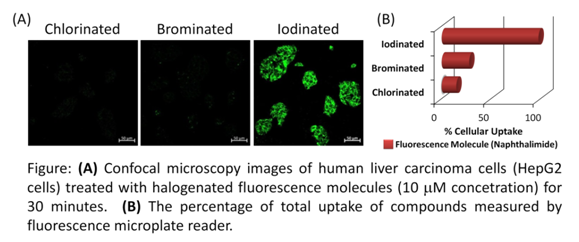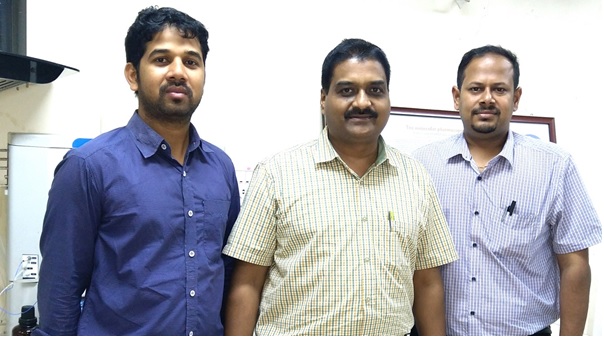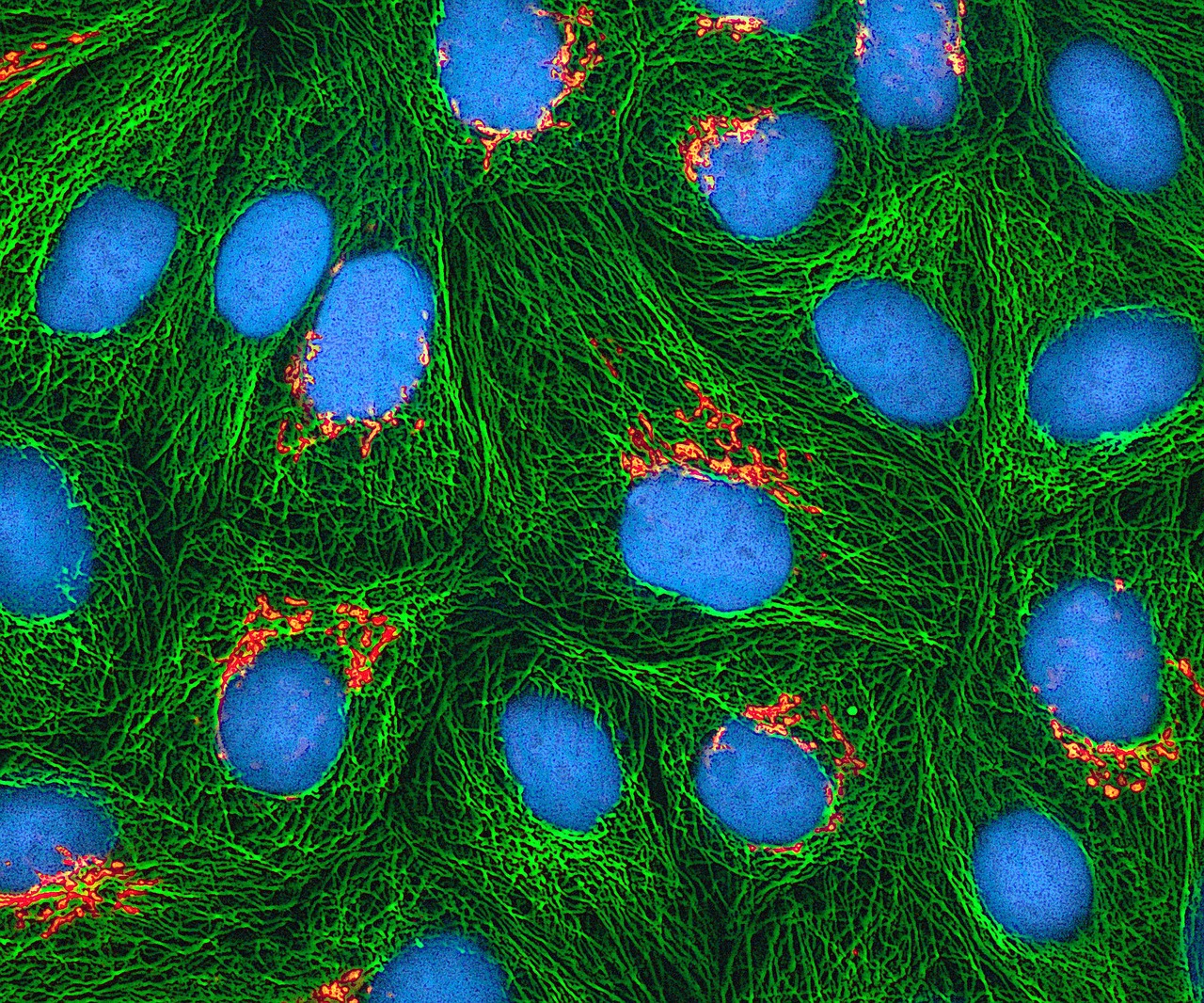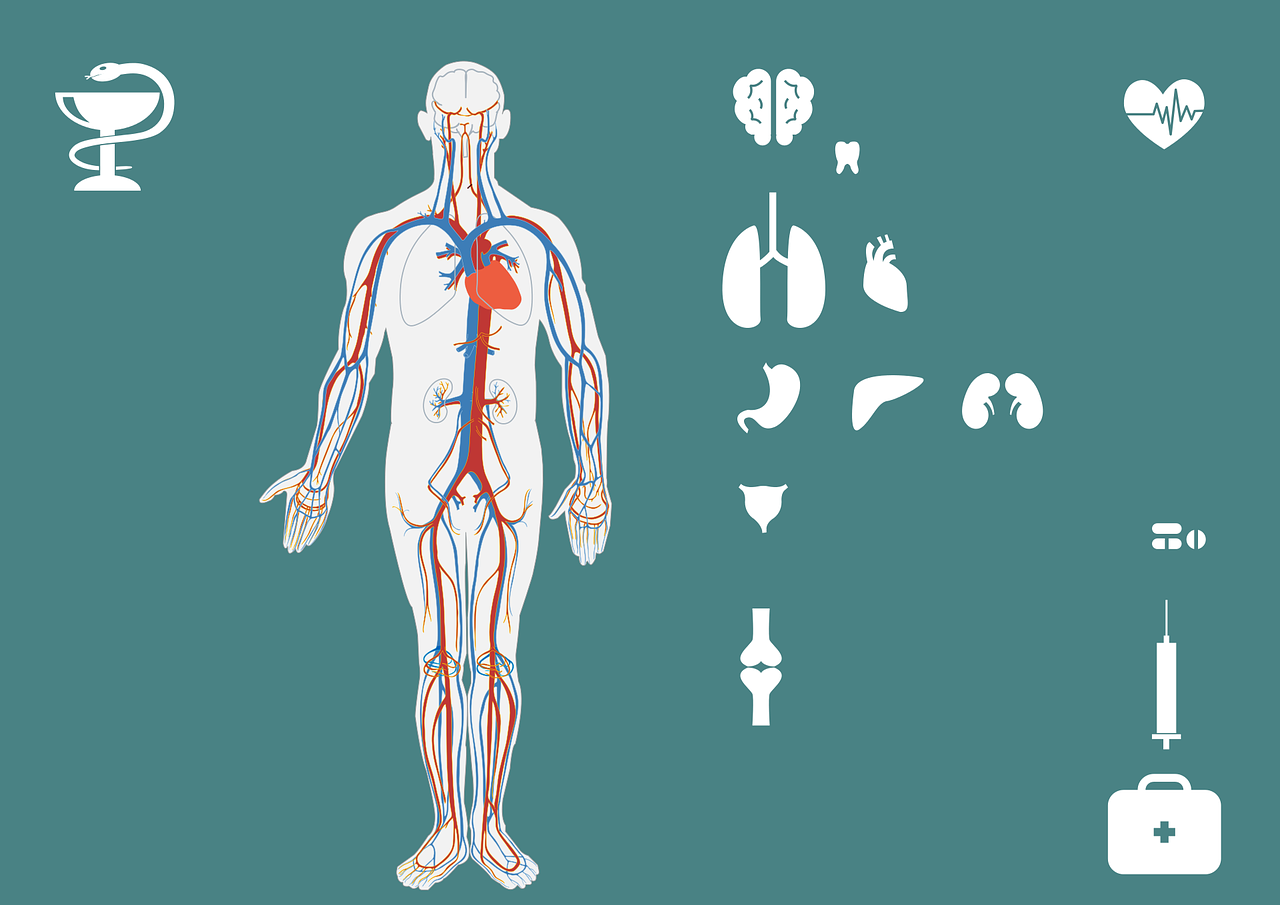Scientists at Indian Institute of Science, Bengaluru have found a way to enhance uptake of fluorescent probes into cells.
They have found that by replacing hydrogen atoms at crucial places of napthalimide with iodine or bromide atoms makes it easier to break into cells. Napthalimide molecule shines under ultraviolet light by itself or when combined with any other molecule and hence is used as a fluorescent probe.
Fluorescent probes are used to detect molecules, monitor cellular activity and deliver drugs inside cells. Fluorescent probes based on naphthalimide are especially popular as they can easily be made in large quantities and their fluorescence can be tweaked by changing their constituent atoms.
Besides they are not harmful like radioactive ones. However, they are usually absorbed by cells only in small quantities, which hampers their effectiveness.

Image Prof G. Mugesh, IISc
Researchers led by Prof Govindaswamy Mugesh found that simply replacing two hydrogen atoms with iodine in their structure dramatically increased the amount entering into mammalian cells. Almost 98% of all probes can enter the cell if iodine or bromine atoms are tagged to it.

The team designed fifteen naphthalimide-based probes and tested how they would fare if some of the hydrogen atoms in their structure are replaced with chlorine, bromine or iodine. The uptake increased up to 15% with chlorine and 22% with bromine atoms but went up to 98% when two iodine atoms were added.
Further investigation revealed that the two iodine atoms formed strong bonds with a transporter protein called MCT8 which then ferried the molecule into the cells. MCT8 is known to transport hormones such as thyroxine, into the cells. For example, thyroxine (T4), the hormone secreted by the thyroid gland, needs to be transported from the blood to inside the cell where it gets converted to T3, its functional form.
That adding iodine increases cellular uptake suggests that biological compounds containing iodine probably use a similar transporter protein and mechanism to enter into cells.
Such probes containing iodine could help analyze membrane activity and track thyroxine. “There is no probe to understand how much T4 is transported inside the cells. Generally, it is measured by using radioactive iodine. But our method is a simple fluorescent method, which does not use any radioactive compounds, to find out whether MCT8 is functioning properly or not, and if hormone uptake is affected or not”, researchers said.
The research team included Harinarayana Ungati, and Vijayakumar Govindaraj, besides Mugesh. The research results have been published recently in journal Angewandte Chemie. The study was funded by the Science and Engineering Research Board (SERB). (India Science Wire)
By Kollegala Sharma
Journal Reference
If you liked this article, then please subscribe to our YouTube Channel for the latest Science and Tech news. You can also find us on Twitter and Facebook.



